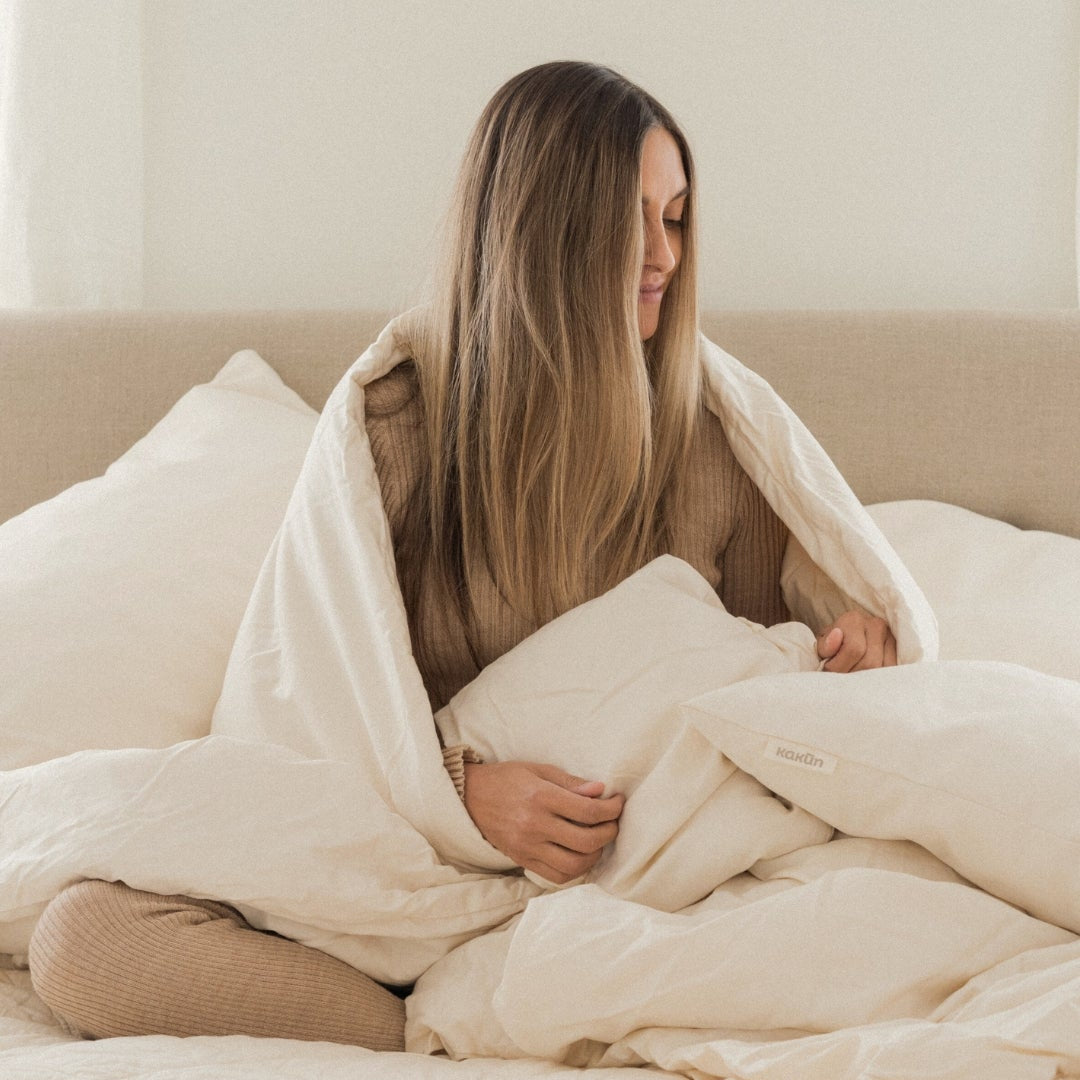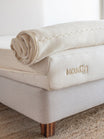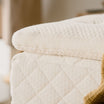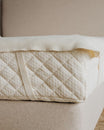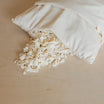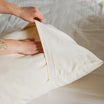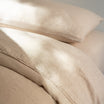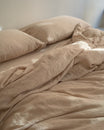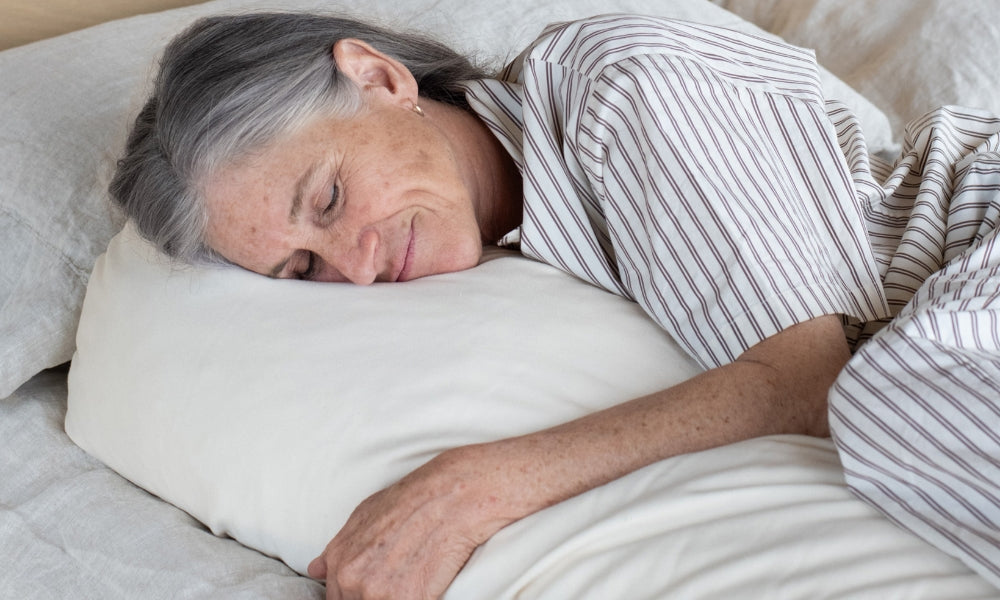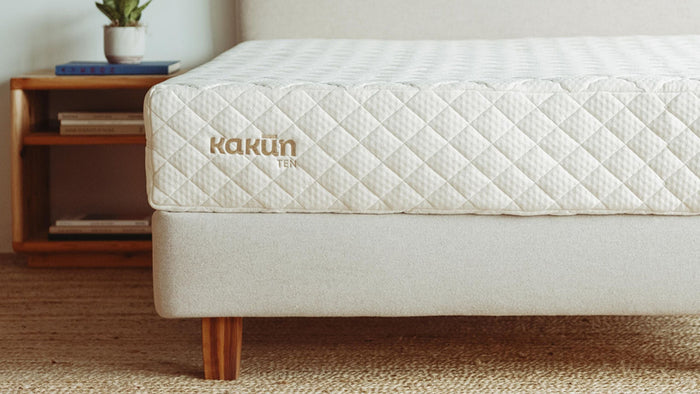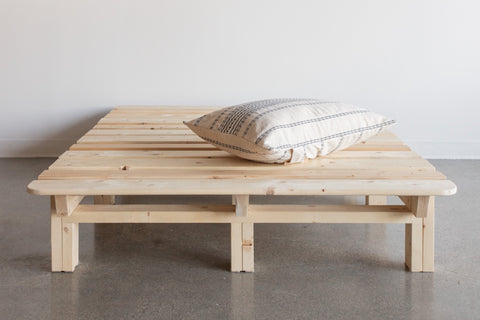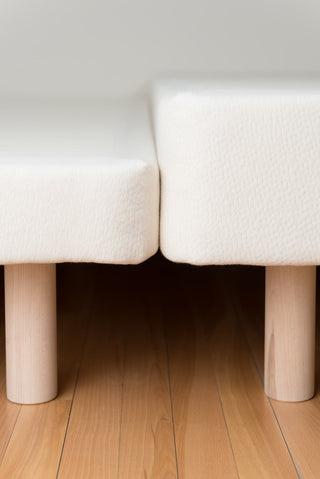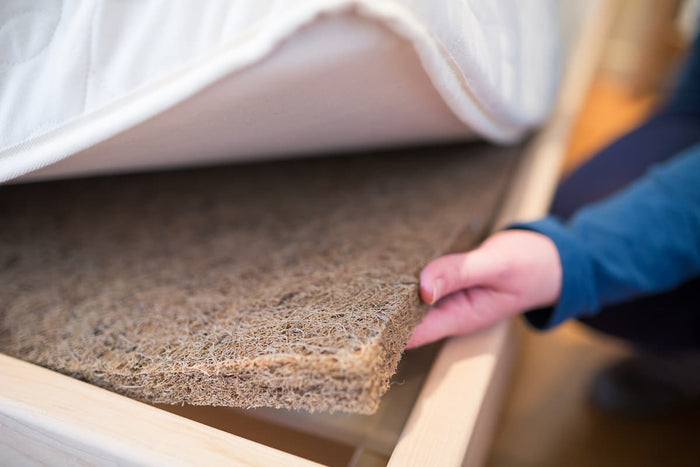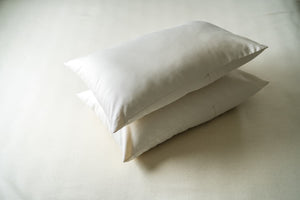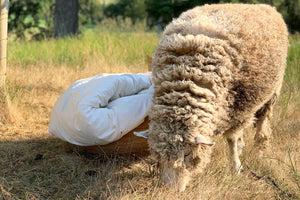Alternatives to traditional box springs are an important component of natural and healthy sleep solutions.
Box springs were first introduced at the end of the 19th century when they were designed to help absorb impact and reduce wear and tear on the mattress. Box springs were necessary then because mattresses had much thinner profiles and were primarily innerspring designs. Innerspring mattresses were made with few or no extra layers for support.
Today’s mattresses are manufactured with multiple layers and do not require a box spring for optimal support. A box spring can actually hinder a mattress's performance, due to lack of proper support and breathability.
What are some box spring alternatives?
There are a number of alternatives to a box spring.
Platform Beds: Modern-Looking Box Spring Alternatives
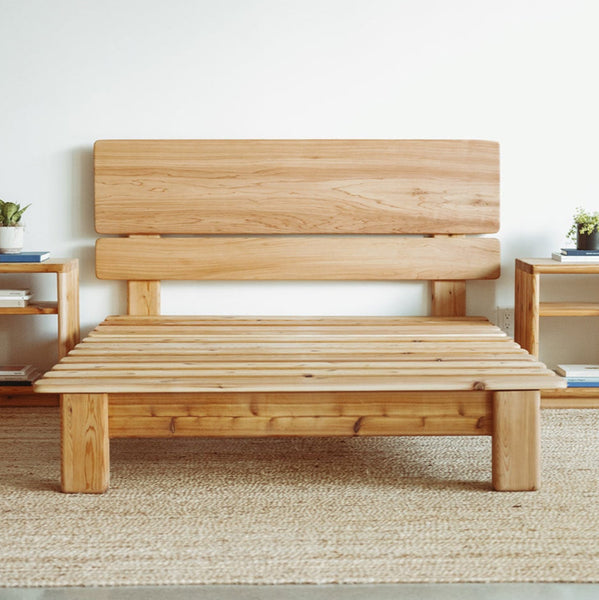
A platform bed, also known as a cabin bed, consists of a raised, level, typically rectangular, horizontal solid frame with rows of sturdy wooden slats meant to support just a mattress. These solid-wood frames are made to perfectly support even heavy mattresses. No box spring is needed with a platform bed.
Platform beds utilize properly spaced slats – each two to three inches apart - to ensure that your mattress doesn't sag and keeps airflow constant, prolonging its life for years to come.
Foundations
These mattress foundations are simply a solid box-like frame, with solid wooden slats, covered in fabric. These can come with feet to be placed on the floor or without feet to be placed on top of an existing frame. They support your mattress and raise it to an appropriate height off the floor.
They are also available in a low-profile design for those who may have difficulty getting onto a higher bed
Additional benefits of a foundation are that they:
- Prevent your mattress from sagging
- Increase the longevity of your mattress
Low Profile Slat Solution
If you have an existing bed frame that you would like to keep, but does not have the support your mattress may need, a low profile slat solution is a great alternative.
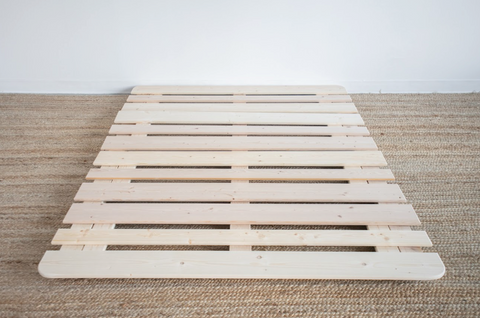
Low and Ultra Low Magic Bed Frame Slat Solution
These low-profile slats are sturdy, and offer strong support and optimal breathability. They can be placed on the floor for grounded sleeping or built to fit into or onto an existing bed frame, to support your mattress properly.
Additional benefits of a low-profile slat solution are that they:
- Prevent your mattress from dipping
- Can be placed on the floor if co-sleeping with babies or young children
- Provide optimal air circulation
Coconut Coir Rugs:
The Coconut Coir Bed Rug is a natural way to improve air flow under your mattress. Made of coconut fibre with organic latex, this GOTS Certified mat drastically improves air circulation, extending the life of your mattress and inhibiting the growth of mould and mildew in humid climates, enclosed spaces, or when using a bed frame that limits airflow.
If you are putting your mattress directly on the floor or your home is extra humid, two coconut coir rugs are recommended for ideal circulation.
What is Coconut Coir?
Coconut Coir is made from the fibrous material found between the hard internal shell and the outer coat of a coconut. It is the thickest and most moisture-resistant of all commercial natural fibres.
Features of Coconut Coir
- Naturally breathable
- Promotes ventilation
- Provides excellent insulation
- Does not harbour dust mites or other allergens
- Unaffected by moisture and dampness
- Tough and durable
- Resilient; springs back to shape even after constant use
Do I need a foundation if my mattress has inner springs?
All mattresses need a foundation for a few reasons.
Breathability
A mattress must have space for air to flow beneath its surface to prevent the growth of mould and mildew. Latex, innerspring, and foam mattress constructions all benefit from a foundation that allows them to breathe.
Longevity
A foundation/bed frame is imperative to ensure your mattress is properly supported, to mitigate sagging or dipping. It will also improve the longevity of your mattress by providing stability and reducing shock and wear. A foundation also prevents dust, mites, mould, and mildew damage to the mattress cover.
Improved accessibility
A foundation raises your mattress off the floor to a height that makes it easier to get on and off the bed.
Frequently Asked Questions
What can be used instead of a box spring?
Instead of a box spring you can support your mattress with a platform bed frame, a foundation, a low-profile slat solution or a coconut coir rug.
Do you really need a box spring?
Mattresses today are constructed for support and comfort and must be used on a firm, breathable surface.
How can I support my bed without a box spring?
You can support your bed without a box spring as long as you place your mattress on a firm breathable surface. Air flow beneath the mattress is important to prevent mould, mildew, mites, and dust.
What happens if you don't have a box spring?
If you don’t have a box spring, you can place your mattress on wooden slats that lie across a wood or metal bed frame. You could also put your mattress on a platform or foundation.
Box springs were initially used to provide support for older style mattresses that were thinner that the ones made today.
Speak with one of our experts about your options.
Give us a call 1-250–597–7378


